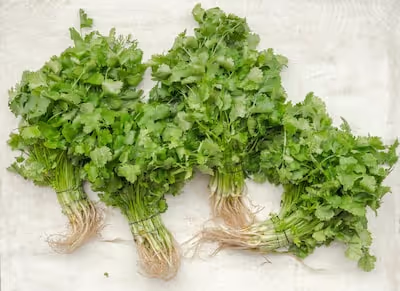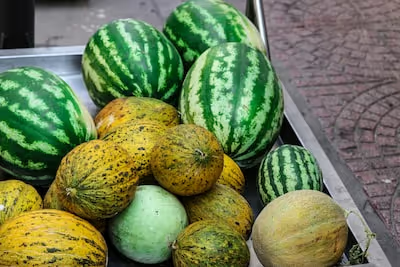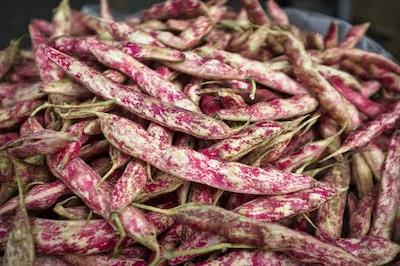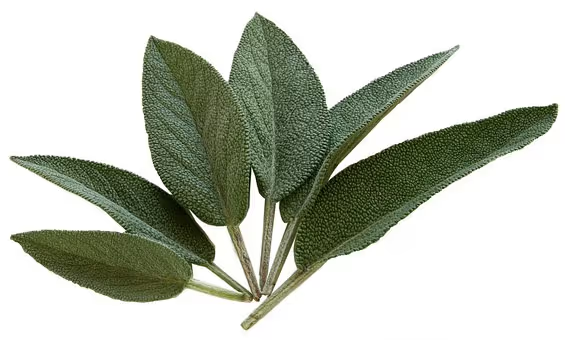Growing Citron Melon: Expert Advice for Garden Success

Growing Citron Melon
Growing citron melon lets gardeners revive a rare heirloom melon, yielding sweet preserves and pickles. Hardy, drought-tolerant vines mean growing citron melon thrives with minimal fuss, even in tough conditions. Discover simple planting tips and straightforward care techniques to make Citron Melon an effortless addition to your garden bounty.
Cheatsheet: Citron Melon Growing Made Simple
🌱 Choose & Germinate Seed
- Heirloom varieties offer best flavor, storage, & jam potential.
- Start indoors 3-4 weeks before last frost or direct sow after soil warms to 70°F (21°C).
- Seed germinates in 7-10 days at 75-85°F (24-29°C).
🌞 Site Selection & Soil Prep
- Full sun, minimum 8 hrs/day.
- Light, sandy, well-drained soil, pH 6.0–7.0.
- Amend with finished compost or aged manure before planting.
🪴 Planting & Spacing
- Plant 1" (2.5 cm) deep, groups of 2-3 seeds, 3-5' (1-1.5 m) apart.
- Thin to strongest seedling per group.
💧 Watering & Care
- Drip irrigate or deep soak weekly; avoid wetting leaves.
- Mulch with straw; suppress weeds, conserve moisture.
- Vines reach 10-15' (3-4.5 m); train or trellis as needed.
- Fertilize at flowering with low-nitrogen organic feed.
🦠 Pest & Disease Watch
- Rotate crops yearly; prevent wilt, downy mildew.
- Scout for cucumber beetles, powdery mildew.
- Harvest before fruit touches damp ground to prevent rot.
🍈 Harvest & Storage
- Fruit matures 90-120 days after sowing.
- Ready when rind is hard, color deepens, stem browns.
- Long shelf life: stores 3-6 months in cool, dry spot (50–55°F/10–13°C).
🥄 Eat for Self-Sufficiency
- High pectin: ideal for preserves, jam, candied rind.
- Low in calories, high fiber, vitamin C.
🧰 Tools and Products You'll Need
- Hand trowel
- Soil thermometer
- Watering can or drip hose
- Straw mulch
- Heirloom seeds
- Compost or organic fertilizer
- Trellis (optional)
Start seeds indoors 3-4 weeks before last frost or direct sow after soil reaches 70°F (21°C).
Choose sunny, well-drained site; enrich soil with compost and test pH.
Plant seeds 1" (2.5 cm) deep, 3-5' (1-1.5 m) apart; thin to one plant per group.
Apply straw mulch; water consistently at soil, not leaf, level.
Watch for pests, diseases; feed at flower set with organic fertilizer.
Harvest when skin hardens, stem browns; store in cool, dry area for months.
-
Growing Citron Melon: Expert Advice for Garden Success
Growing Citron Melon scratches an itch few crops reach: tough as a goat, generous in drought, and a preserving legend in the kitchen.
I grow it for the aroma alone, that clean cucumber-apple scent that makes a pantry feel like a farmhouse in late summer.
Know the plant
Citron melon is Citrullus amarus, a close cousin of watermelon with firm, pale flesh made for preserves, pickles, and candying, not fresh eating.
Also called red-seeded citron, preserving melon, and tsamma, it traces to southern African deserts where it thrives on heat and stingy rain.
In trials and farmer lore it shows gritty drought tolerance and useful disease resistance, which is why it’s sometimes used as rootstock for grafted watermelons.
The rind cures hard, the flesh holds shape when cooked, and the pectin content makes jams set like a charm.
Quote: “Watermelons need multiple bee visits per female flower to achieve full fruit set and shape, typically 8 to 10 visits.” (Clemson Cooperative Extension; UC ANR Vegetable Production guides)
Climate and timing
Warmth wins. Sow once soil stays above 70 to 75 F, 21 to 24 C, and nights stop flirting with frost.
I direct seed after the last frost date or start in biodegradable pots 2 to 3 weeks earlier, then transplant without disturbing roots.
Site and soil prep
Give it full sun and breathing room. I target pH 6.0 to 6.8 on well drained loam with loads of organic matter.
Work in 2 to 3 inches, 5 to 7.5 cm, of finished compost and a balanced, low-chloride fertilizer like 5-10-10 at label rates.
Spacing that keeps vines honest
- Rows 6 to 8 ft apart, 1.8 to 2.4 m.
- Plants 3 to 4 ft apart within the row, 0.9 to 1.2 m.
- Or in hills: 3 seeds per hill, thin to 1 to 2 plants, hills 4 to 6 ft, 1.2 to 1.8 m, apart.
The vines can push 10 to 15 ft, 3 to 4.5 m, so plan pathways you can actually walk.
Black plastic or landscape fabric speeds soil warmup and keeps fruit off wet ground.
Germination and early care
Sow 1 inch deep, 2.5 cm, and keep the top 2 inches, 5 cm, evenly moist until sprouts show in 4 to 10 days.
Use a soil thermometer; guessing costs a week.
Water and feeding
Once established, the plants handle dry spells, yet consistent moisture builds yield. Aim for 1 to 1.5 inches, 25 to 38 mm, per week during bloom and fruit fill.
Back off slightly as fruit nears maturity to firm rinds and concentrate flavor, but do not let vines wilt midday.
Overdo nitrogen and you’ll grow a mattress of vines with stingy fruit set.
I side-dress lightly at runner stage and again at first fruit set, then switch to compost tea or fish hydrolysate if leaves pale.
Pollination that pays
Citron melon leans on bees. I see the best set when I’ve got steady native bee traffic plus a managed hive nearby.
Avoid insecticides during bloom or spray at dusk with bee-safe options if you must.
Training and pruning
I let vines sprawl on mulch, then slide ripening fruit onto tiles or shingles to keep rinds clean.
If space is tight, a stout A-frame trellis with slings works for smaller fruit, though this crop prefers ground life.
IPM: pests and diseases
- Cucumber beetles: Row cover until first female flowers, then remove for pollination. Yellow sticky traps help.
- Squash bugs: Crush egg clusters on leaf undersides and vacuum nymphs with a handheld shop vac in the morning.
- Aphids: Hard water spray, then release lady beetles or lacewings if pressure persists.
- Powdery mildew: Improve airflow, water mornings, and rotate. Potassium bicarbonate sprays tame early outbreaks.
- Fusarium and gummy stem blight: Respect 3 to 4 year rotations. Healthy soil tilts the math in your favor.
This species often shrugs off heat spikes that flatten muskmelons, which buys you harvests in hot summers.
Extension guides from universities and USDA GRIN describe C. amarus with useful stress tolerance, which matches what I see in the field.
Harvest cues and storage
Expect 90 to 110 days to maturity. Look for a dry, brown tendril nearest the fruit, a dull rind sheen, and a buttery ground spot.
Cut with an inch of stem, 2.5 cm, and cure a week in shade with airflow.
Stored at 50 to 55 F, 10 to 13 C, and 85 to 90 percent humidity, sound fruit keeps for weeks, sometimes months.
UC Davis Postharvest recommendations for watermelon storage sit in that same range, and they translate well to citron melon.
Kitchen use that earns pantry space
- Preserves: Dice, simmer with sugar, lemon, ginger, and the fruit’s own pectin. It sets like a well-behaved marmalade.
- Pickles: Brine cubes with cider vinegar, clove, and chili for a cheese-board ally.
- Candied: Slow-cook in syrup, dry on racks, then dust with sugar.
- Seeds: Toast with salt and paprika. Snack fuel for harvest days.
It won’t scratch the dessert watermelon itch, and that’s the point.
This is a preserving melon that carries spice and citrus like a professional kitchen workhorse.
Seed saving and genetics
Citron melon crosses with watermelon, so isolate by 800 ft to 0.25 mi, 244 to 402 m, for dependable seed purity.
Or hand-pollinate with blossom bags and labels. It takes five calm minutes per flower and pays off next year.
Stat: Soil pH 6.0 to 6.8 and soil temps above 70 F, 21 C, give the fastest emergence and cleaner stands. (NCSU, UGA, and USDA vegetable guides)
My field notes
On a 102 F, 39 C, August afternoon, my muskmelons sulked while the citrons kept pushing new female blossoms like they hadn’t gotten the memo.
I mulch deep with straw, run a simple drip line, and skip foliar feeds during bloom to keep pollinators happy.
Fruit size in my plots sits at 6 to 10 lb, 2.7 to 4.5 kg, with thick rinds that never split after storms.
That rind buys storage, which buys time for proper preserves instead of midnight canning marathons.
Buying guide: seeds, tools, and gear I rate
- Seed sources: Look for named lines like Red-Seeded Citron or Colorado Preserving Melon from heirloom-focused vendors or seed libraries.
- Soil thermometer: A simple probe prevents cold-soil sulks and re-seeding.
- Row cover and hoops: Use early for beetle pressure, remove at first female bloom.
- Drip kit: 0.5 gph emitters at 12 to 18 in, 30 to 45 cm, spacing give even moisture on raised beds.
- Harvest knife and bins: Smooth blades and ventilated crates reduce rind scuffing.
I skip fancy trellis kits for this crop unless I’m short on square footage.
Spend the money on irrigation and a solid mulch layer instead.
Comparisons and look-alikes
- Citron melon vs watermelon: Citron stays firm and faintly aromatic, made for cooking. Watermelon is sweet and hydrating for fresh eating.
- Citron melon vs winter melon (Benincasa hispida): Winter melon is a gourd with waxy rinds for soups. Different species, different use.
- “Preserving melon” label: Often means citron melon in heirloom catalogs, but always read descriptions for species and use.
Top 6 pro tips for Growing Citron Melon
- Warm the soil first. Plant later in spring and gain faster stands and fewer seedling diseases.
- Feed lean. Push potassium and calcium, and hold nitrogen after first set to favor fruit.
- Mulch heavy. Straw or fabric controls weeds and protects rinds.
- Water deep, then rest. Long soaks two to three times weekly beat daily sprinkles.
- Protect early, then invite bees. Row cover off at first female blooms.
- Harvest by tendril and sheen. Do not wait for a hollow thump like watermelon.
FAQs that gardeners actually ask
How many plants per household? Two plants deliver more preserves than most kitchens can process.
Can it climb? Yes with strong support and slings, but ground culture stays happier.
Can I interplant? I tuck basil and nasturtium at row edges for beneficials without crowding the crowns.
Will cross-pollination ruin fruit flavor? Crosses only affect saved seed, not this year’s fruit.
Credible references I trust
- USDA GRIN and Agricultural Research Service profiles for Citrullus amarus and related rootstock notes.
- UC ANR and UC Davis Postharvest Technology Center for cucurbit storage temperatures and handling.
- Clemson Cooperative Extension, NCSU, UGA vegetable production guides for pollination metrics, soil pH, and fertility ranges.
- Seed Savers Exchange and land-grant seed programs for heirloom varietal histories and isolation distances.
I plant citron melon every other year for pantry sanity and drought insurance.
It behaves like an old friend that shows up with jam jars and stays to help clean the kitchen.
Citron Melon Gardening FAQ
What's the ideal spot for growing citron melon?
Citron melon plants savor full sun exposure. Reserve them a patch of earth bathed generously in sunlight, ideally 6–8 hours daily, ensuring the soil drains readily and breathes deeply.
How much water do citron melon vines demand?
Young citron melon plants thirst moderately—regular moisture without waterlogged distress. Allow the soil to dry gently between watering sessions, delivering moisture at the root zone to prevent fungal dilemmas and leaf maladies.
When should citron melon seeds hit the ground?
Patience pays dividends here—sow your citron melon seeds outdoors once the threat of frost retreats entirely. Soil temperatures should hover around 65°F (18°C) or higher for the best germination rituals.
Are citron melon vines inclined to wander?
Absolutely. Citron melons are adventurous climbers, sprawling enthusiastically into open territories. Offer them ample breathing room—allow 4 to 6 feet between plants—or train them vertically along sturdy trellises to conserve space and facilitate harvest.
When are citron melons ripe for plucking?
Timing demands instinct and observation. Harvest citron melons as their skins toughen and pale, and vine tendrils adjacent to fruits dry elegantly. A gentle thump should resonate with a subtle, hollow reverberation—an unmistakable signal of readiness.
How should citron melons be stored after harvest?
Post-harvest, citron melons display remarkable shelf-life. Keep them resting comfortably in cool, ventilated quarters—between 50–60°F (10–15°C)—and they remain steadfast companions for weeks, if not months, until culinary inspiration arises.
Growing Citron Melon isn’t about chasing trends—it’s about honoring a fruit that laughs in the face of drought and rewards patience with old-world flavor. Give it sun, room to sprawl, and well-drained soil. Keep your watering steady but never soggy. Mulch deep. Harvest when the rind resists your thumb and the vines begin to yellow. Respect the process; Citron Melon takes its sweet time.
If you’re drawn to garden oddities or want something with grit and history, this is your plant. It’ll teach you the rhythm of the seasons and maybe remind you why you started gardening in the first place. For those who crave more rare edibles, check out mashua or tiger nut—they’ll keep your hands dirty and your table interesting. In the end, growing citron melon is about patience, grit, and a taste of something nearly forgotten. That’s garden satisfaction money can’t buy.
Pro Strategies for Organic Citron Melon Cultivation
Soil Conditioning Essentials
- Amend sandy soils with compost (7-10 cm / 3-4 inches deep) to retain moisture yet ensure drainage.
- Apply aged manure or worm castings (2-4 kg per square meter / 5-9 lbs per 10 sq. ft.) 3 weeks pre-planting.
- Maintain soil pH between 6.0–6.8 to optimize nutrient uptake for citron melons.
Pollinator Attraction Techniques
- Interplant citron melons with insect-attracting annual flowers like calendula or cosmos to boost pollination rates significantly (up to 30%-40%).
- Provide shallow water dishes with pebbles nearby to sustain pollinator hydration and activity.
Advanced Water Management
- Install drip irrigation systems under mulch to deliver water precisely and reduce evaporation loss by up to 50%.
- Water early mornings, targeting soil moisture depth of 20-30 cm (8-12 inches) weekly during fruit formation.
Natural Pest Deterrents
- Introduce beneficial insects—ladybugs, lacewings, and parasitic wasps—to control aphids, thrips, and spider mites effectively.
- Spray diluted neem oil (5 ml per liter / 1 tsp per quart water) biweekly to repel squash beetles and leaf miners naturally.
Harvest and Nutritional Maximization
- Harvest citron melons at peak ripeness (85-100 days post-planting) to maximize vitamin C and antioxidant concentration.
- Store harvested fruit in cool, shaded conditions (10-15°C / 50-59°F) to retain nutrients for extended periods (up to 2-3 months).
- Citron melons offer abundant potassium, magnesium, and dietary fiber, supporting heart health and digestive well-being.
Find out which plants will thrive in your garden!
Answer a few fun questions and get custom plant recommendations perfect for your space. Let’s grow something amazing together!

start your season





